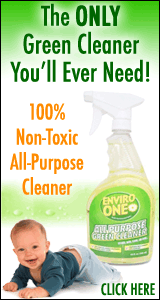FDA "Regulation" of Cosmetics and Fragrances
Whenever the safety of perfumes and fragrances is questioned, the fragrance industry's standard reply is that perfumes are regulated by the FDA. This statement is true, as perfumes do come under the regulation of the FDA. However, let's take a closer look at what this regulation really consists of:
By law, the ingredients of a product must be listed on the label. These are listed in order of predominance. There are a few exceptions to the labeling requirements. Fragrance formulas are considered trade secrets and so the ingredients in fragrances are not required to be revealed. So the word "fragrance" must be put on any product that has ingredients added to give the product an odor. The word "fragrance" on the label may represent many ingredients, sometimes hundreds.
If fragrance is added to a product to mask or cover up the odor of other ingredients, it is not required to be put on the label. Many companies do list masking fragrances on the label, but it is not required. "Unscented" or "fragrance free" on the label is no guarantee that the product does not contain fragrance chemicals. Since "unscented" and "fragrance free" have no legal definition, these words can be used any way the company chooses. It is up to the consumer to be informed. Buying unscented products may not provide protection from fragrance chemicals that cause adverse reactions.
It is often thought that the FDA regulates what can go into a perfume. The FDA specifically bans about ten chemicals from use in cosmetics and fragrances. Legally, any other chemical can be used in making a fragrance. There are thousands of chemicals available for use in the production of fragrances and perfumes—many which are quite toxic.
Due to the amount of time, research, and expense involved in legally banning an ingredient, the FDA depends on the fragrance industry's voluntary agreement to eliminate or limit certain ingredients that have been shown to cause irritation, allergies, and other skin problems. Trade organizations in the fragrance industry make recommendations as to the safety of the use of certain ingredients; however, individual manufacturers are not bound by these recommendations or law.
Safety is an increasing concern with fragrance chemicals. Increasingly, perfumes are a trigger for asthma, allergies, migraine headaches, and other problems. The FDA does not require safety testing of any ingredient that goes into cosmetics or perfumes. Only once the product is on the market does the FDA have any regulatory authority. Then the FDA must prove in court that the product is unsafe before it can require the product be removed from the marketplace. Many times manufacturers will voluntarily recall a product that is in question.
The FDA does not require companies to register with the FDA, file the ingredients used, or even keep a record of injuries related to the use of their products. There is a voluntary data collection program if manufacturers wish to participate.
The fragrance industry does come under the regulation of the FDA, but the regulation is extremely limited. Many of the ingredients used in fragrances have little to no safety testing done on them. Most of the safety testing that has been done has revolved around the dermatological effects of fragrance chemicals. The effects on the respiratory system, the brain, and other organs of the body have not been determined on individual chemicals—much less in the combinations in which they are used.
(Information summarized by Betty Bridges, RN)
From the "Horse's Mouth"
To learn more about the so-called "FDA Regulation" of the fragrance industry—which falls under the category of "cosmetics"—read the following reports, which were written by the FDA itself:
FDA Authority Over Cosmetics
Prohibited Ingredients in Cosmetics
Decoding the Cosmetic Label
"Fragrance Free" and "Unscented" – But Are They?
Hypoallergenic Cosmetics
Many thanks go to Betty Bridges, RN, for compiling this information!








